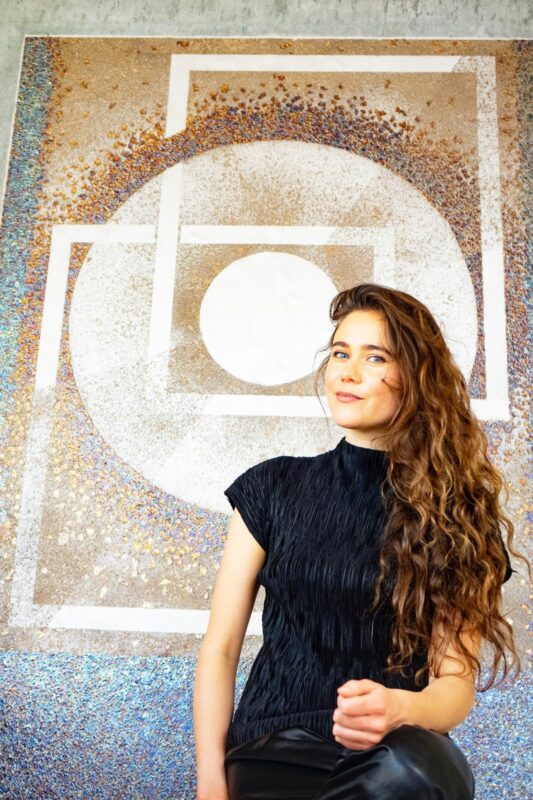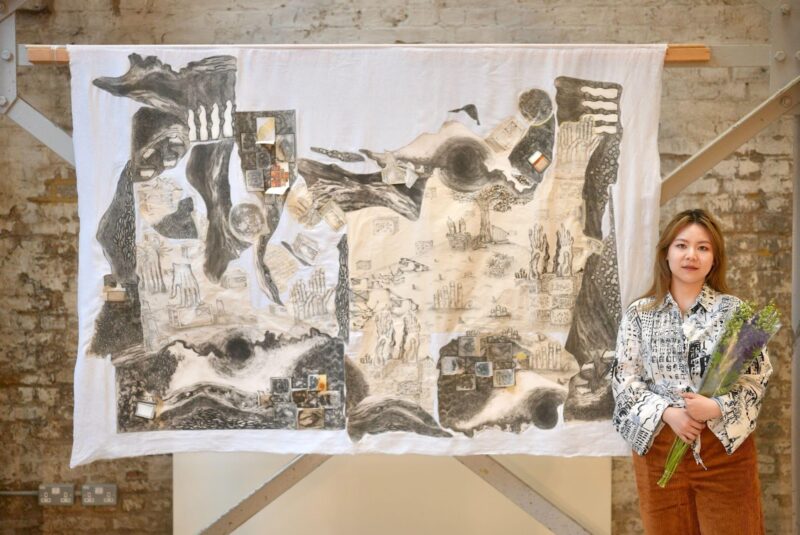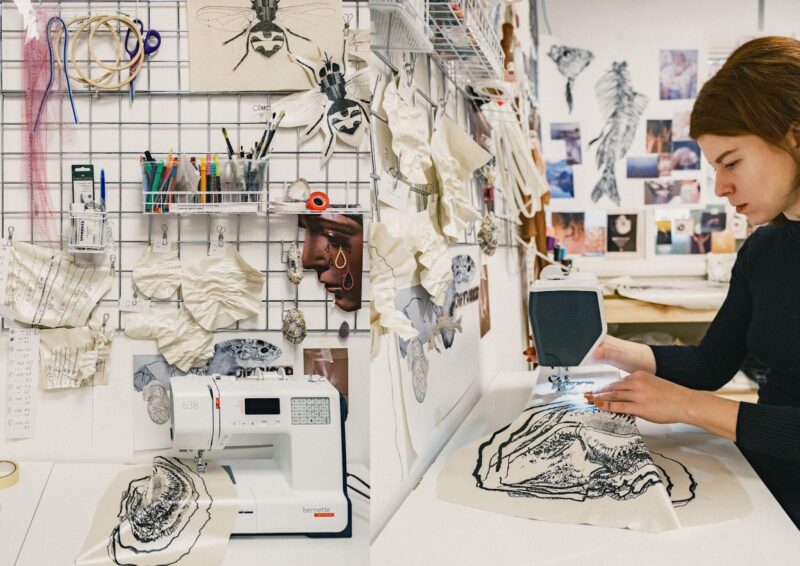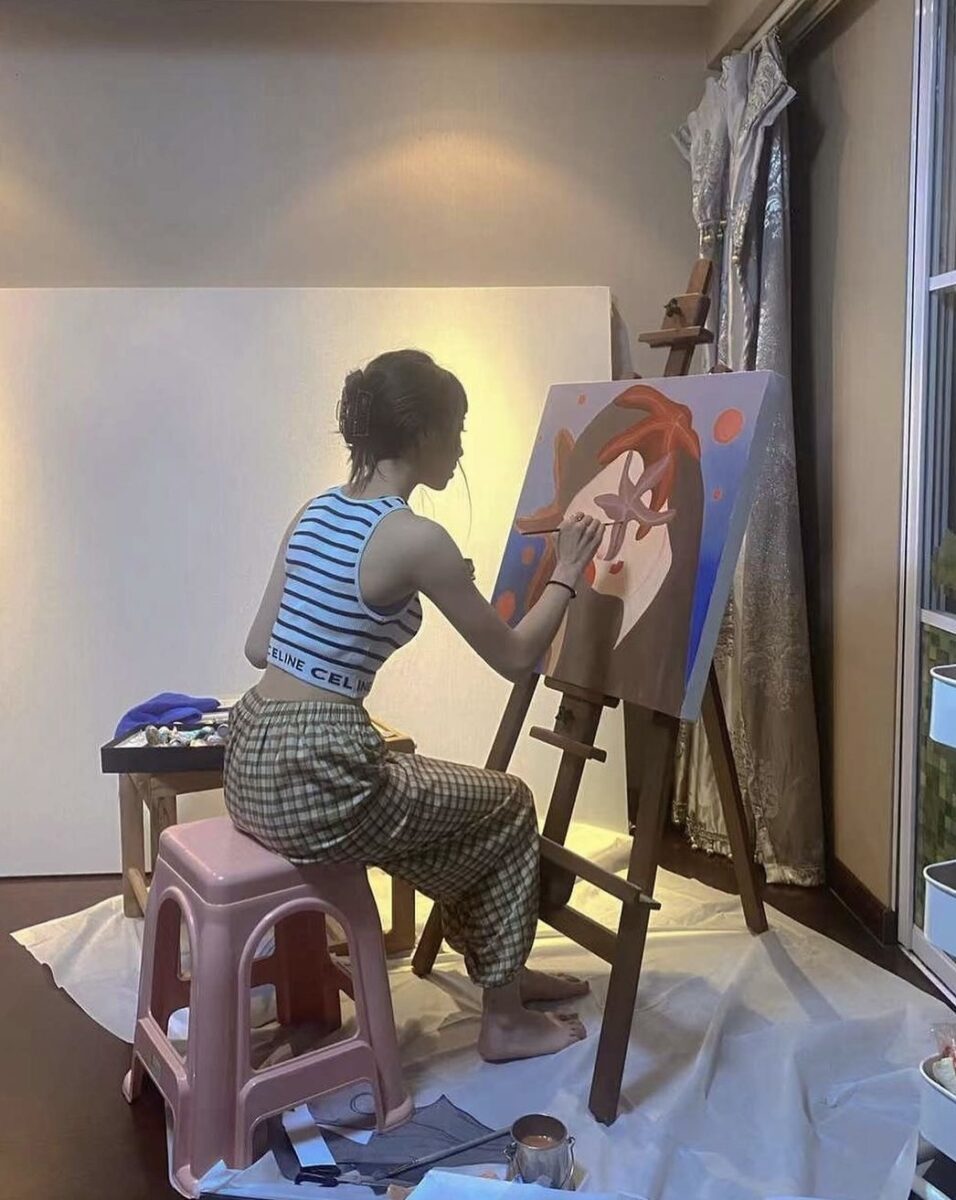
Tiange Chen has always been deeply curious about the nature of life. Even from a young age, existential questions such as, “Why do people live?” and “What is the meaning of existence?” constantly occupied her thoughts. These were not negative musings, but rather a natural curiosity about life’s cycle—its joy and sorrow, its birth and death. It is this profound reflection that led Tiange to explore art as a means of understanding the world. For her, painting became a way to capture moments of existence, with oil paint serving as the perfect medium due to its versatility. The way oil paints could be shaped and layered mirrored life itself, where existence is pieced together through experiences, much like the shapes and lines that form her artwork.
The breadth of Tiange Chen’s interests—ranging from travel and sports to romance—profoundly informs her creative process. She believes that the emotions tied to these activities are universal, even if the experiences are personal. “The joy of setting out on a new journey or the satisfaction that comes after a good workout is something most people can relate to,” she says. Her goal is to capture these shared human feelings through her art, evoking connections with viewers who may find echoes of their own lives in the work. For Tiange Chen, trying new things constantly keeps her work alive, adding fresh inspiration and vitality to every piece.
Interestingly, she does not view herself through the traditional lens of an “artist.” Instead, Tiange Chen prefers to describe herself as an observer and recorder of life, using painting as her chosen form of documentation. In her view, the title “artist” is just a convenient label for someone who uses this visual language, but it doesn’t fully encompass the scope of her practice.
One of her most poignant works is the series When I Was Six, which was created shortly after Tiange moved to London in 2022. This was a significant time, just after the world began recovering from the pandemic. But while society was emerging from crisis, Tiange Chen had suffered a deeply personal loss—her grandmother, who had played an integral role in her upbringing. “She raised me when my parents were too busy with work,” she recalls. Her grandmother was later diagnosed with Alzheimer’s disease, and although her memories gradually slipped away, she never forgot Tiange’s name.
After moving to the UK, the long, dark winters of London brought back these memories, crystal-clear in a way that Tiange had not experienced before. Fearing that she might forget her cherished moments, she began painting them, using art as a way to preserve the fragments of their grandmother’s recollections. Each piece in the When I Was Six series tells a story of their childhood—an intimate narrative that connects past and present, love and loss.
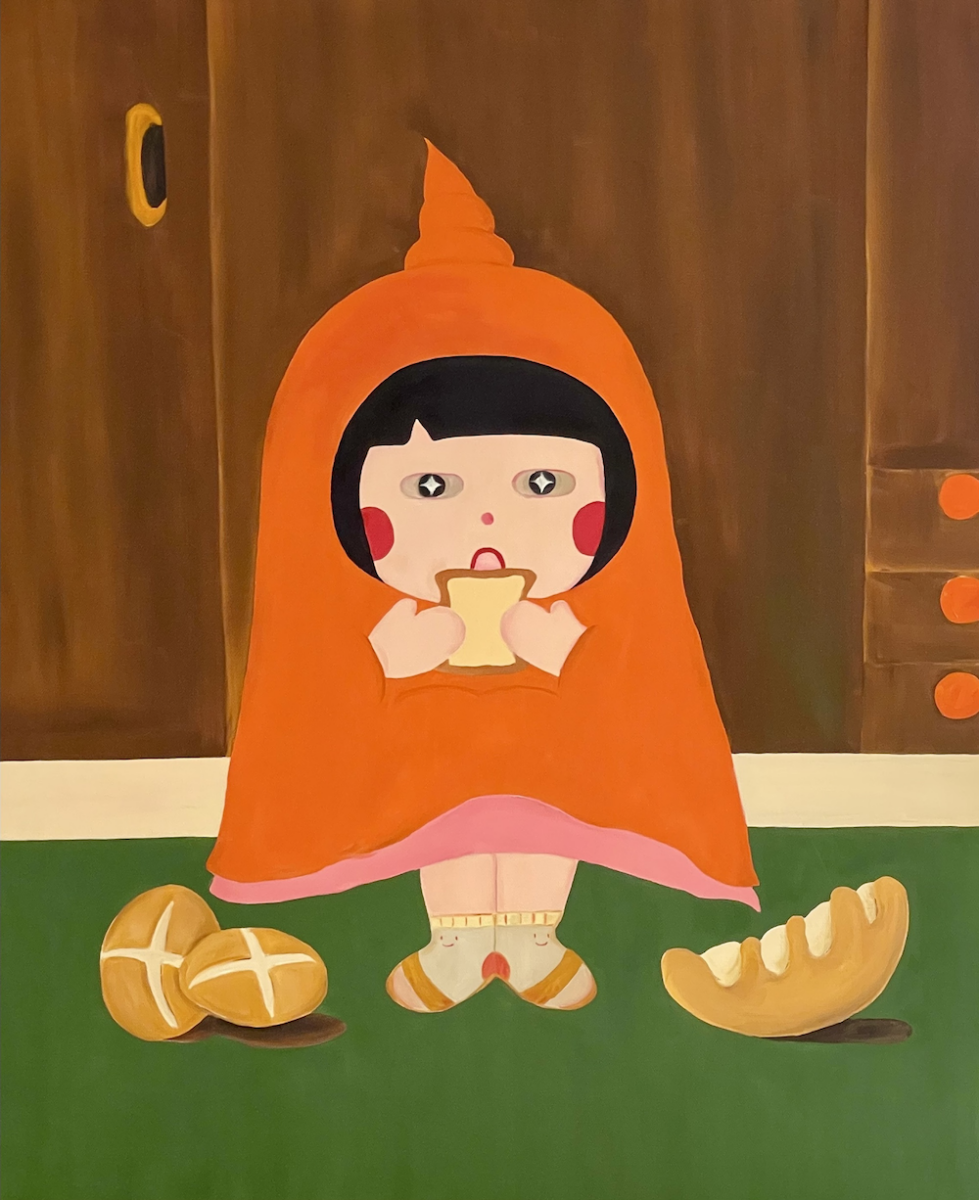
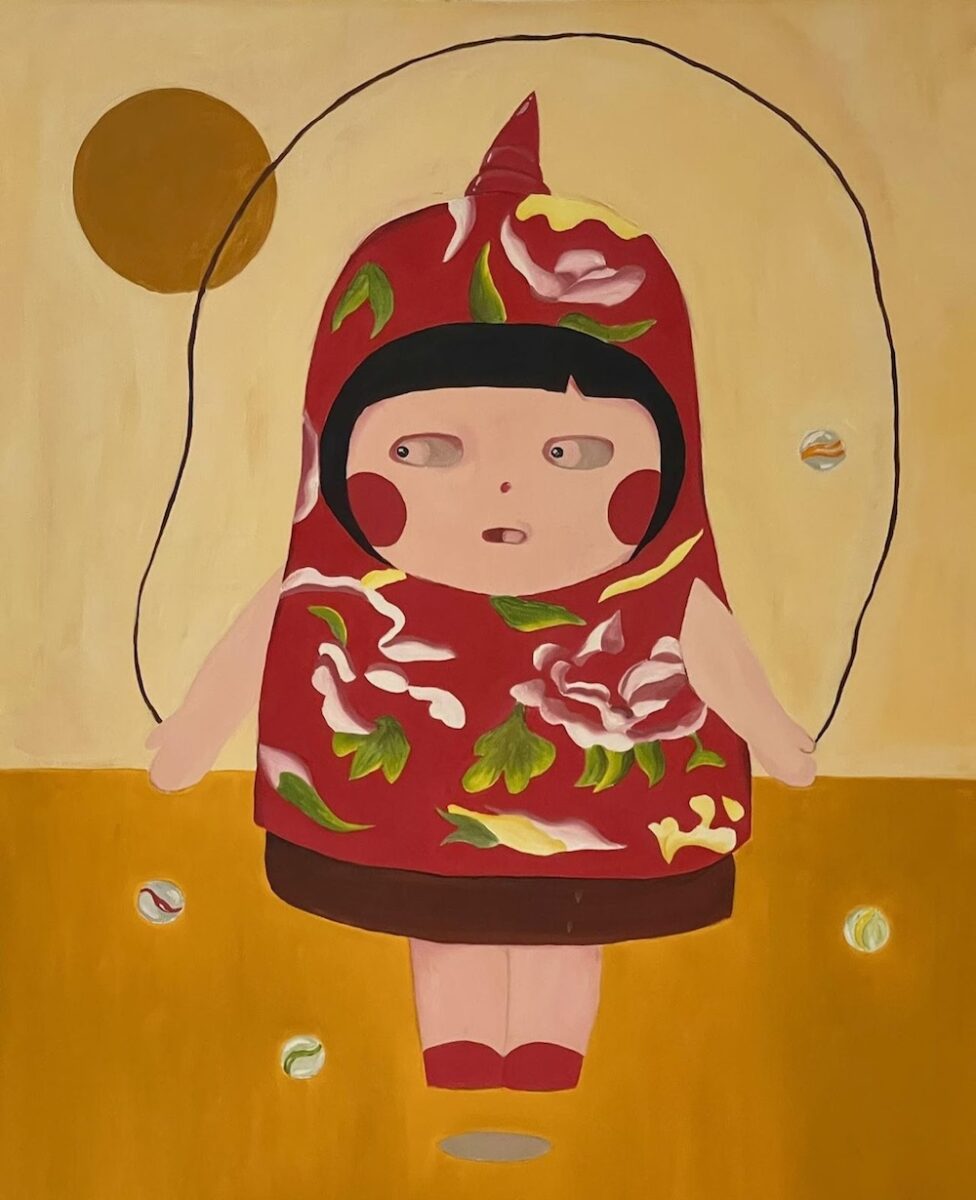
“When I Was Six,” has a whimsical, nostalgic charm that invites the viewer to reflect on childhood memories. Tiange has employed a flat, minimalistic approach, using bold shapes and simple forms that are reminiscent of children’s illustrations. This simplicity contributes to the emotional pull of the piece, evoking a sense of childlike wonder. There is a surreal quality in the piece as well, with proportions slightly off and the exaggerated, doll-like facial features.These stylized elements give the work a dreamlike quality, implying that the scene is more a memory or a feeling than a literal depiction. The simplicity of the background, devoid of any real texture or detail, pushes the viewer to focus entirely on the central figure, enhancing the emotional resonance.Overall, the painting can be seen as an exploration of the artist’s own childhood or a broader reflection on the universal experience of growing up.
Another theme that runs through Tiange Chen’s work is the concept of Neti Neti, a Sanskrit phrase meaning “not this, not this” or “neither this, nor that.” In spiritual practice, it is a form of self-inquiry used to negate layers of false identity in the search for the true self. For Tiange, this concept plays a central role in her artistic journey. She use painting as a way to question the meaning of existence, following her consciousness to create images that serve as answers. In this way, Neti Neti becomes not only a philosophical idea but a practical tool, helping to transcend the superficial layers of appearance to reach deeper truths.
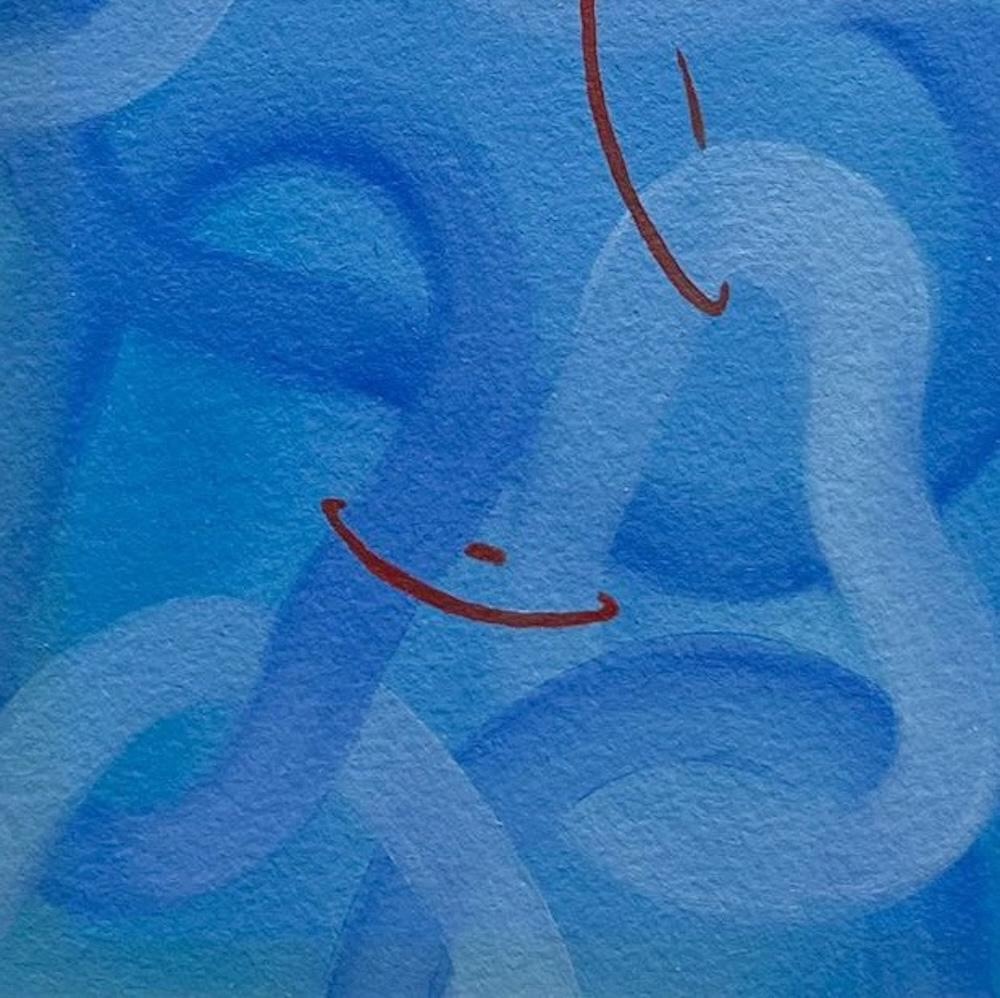
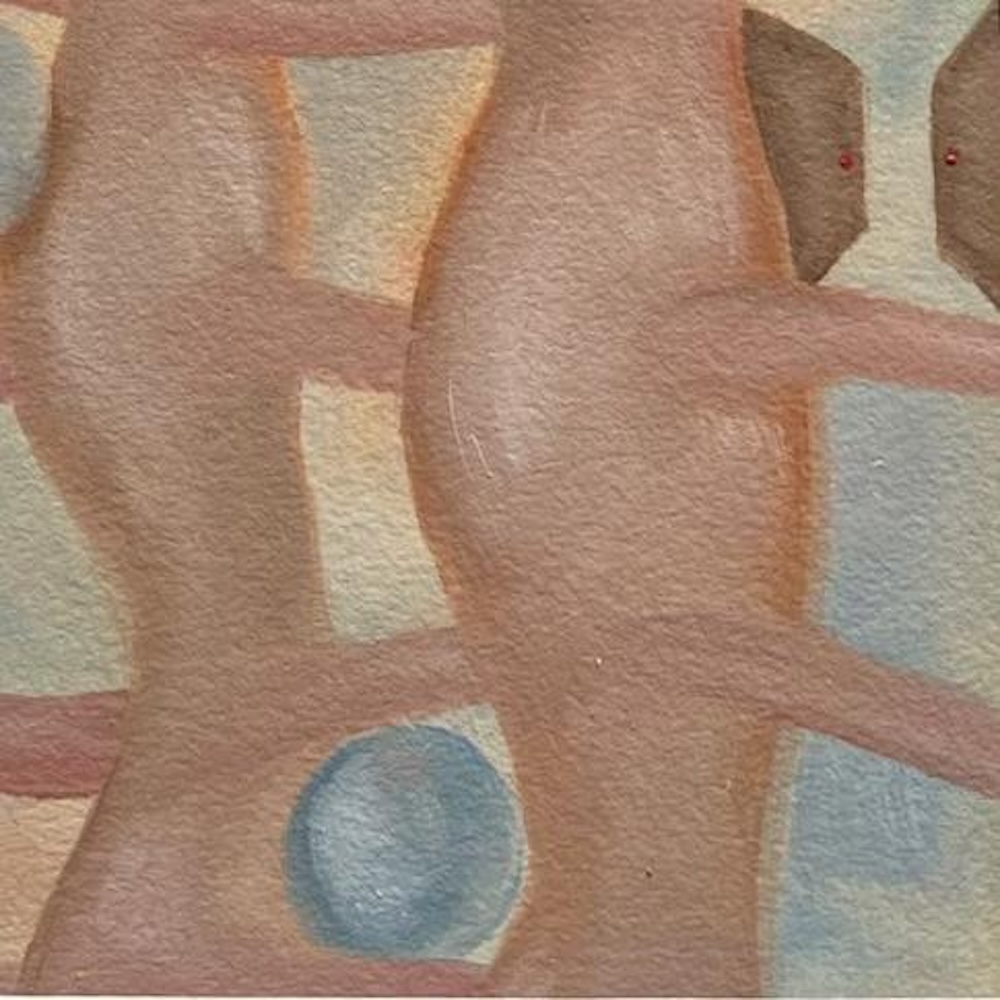
In Neti Neti series, paintings share an exploration of abstraction, with Neti Neti 07 leaning more toward fluid, ethereal elements, while Neti Neti 02 presents more grounded, human-like forms. The shared theme of Neti Neti connects them philosophically, suggesting a deep reflection on existence, perception, and the limitations of defining reality. The works are subtle, and their simplicity of form belies the complexity of the ideas they seem to evoke. Through muted colors and graceful forms, they create an atmosphere of quiet contemplation, urging the viewer to question the nature of the self and the world beyond rigid labels and forms.
In their own ways, Neti Neti seem to embody the essence of spiritual inquiry—neither claiming to offer answers, nor pretending to define the nature of reality, but instead inviting viewers into a meditative experience where they can explore their own interpretations.
In terms of artistic influences, Tiange Chen originally drew inspiration from Picasso. Her first oil painting, an abstract composition of colorful, exaggerated forms, was noted by a teacher for its similarities to Picasso’s style. Although the resemblance was unintentional, Tiange was intrigued by the bold combinations of color and line that Picasso was known for. However, the pandemic marked a turning point in their creative journey. With time to slow down and reflect, she began to move away from their earlier inspirations. No longer rushing to finish pieces, she began to allow more space for refinement and revision. More importantly, her focus shifted from what she wanted to paint to how she felt in the moment. This change in process led to a significant evolution in her style, which has become more introspective and personal.
Today, rather than being influenced by other artists, Tiange Chen draws inspiration from the small, everyday details of life. “The new haircut of my neighbor’s dog or the orange tie worn by the security guard downstairs—these are the things that capture my attention now,” she says, reflecting on how life’s ordinary moments fuel her creative spirit.
Looking ahead, Tiange Chen has exciting plans for 2024 and 2025. Next year, she plan to continue work on the When I Was Six series, having completed many preliminary sketches but not yet finished the final pieces. Then, in 2025, she plans to embark on a new journey—literally. This next chapter promises to add another layer to their ever-evolving exploration of life, art, and meaning.
